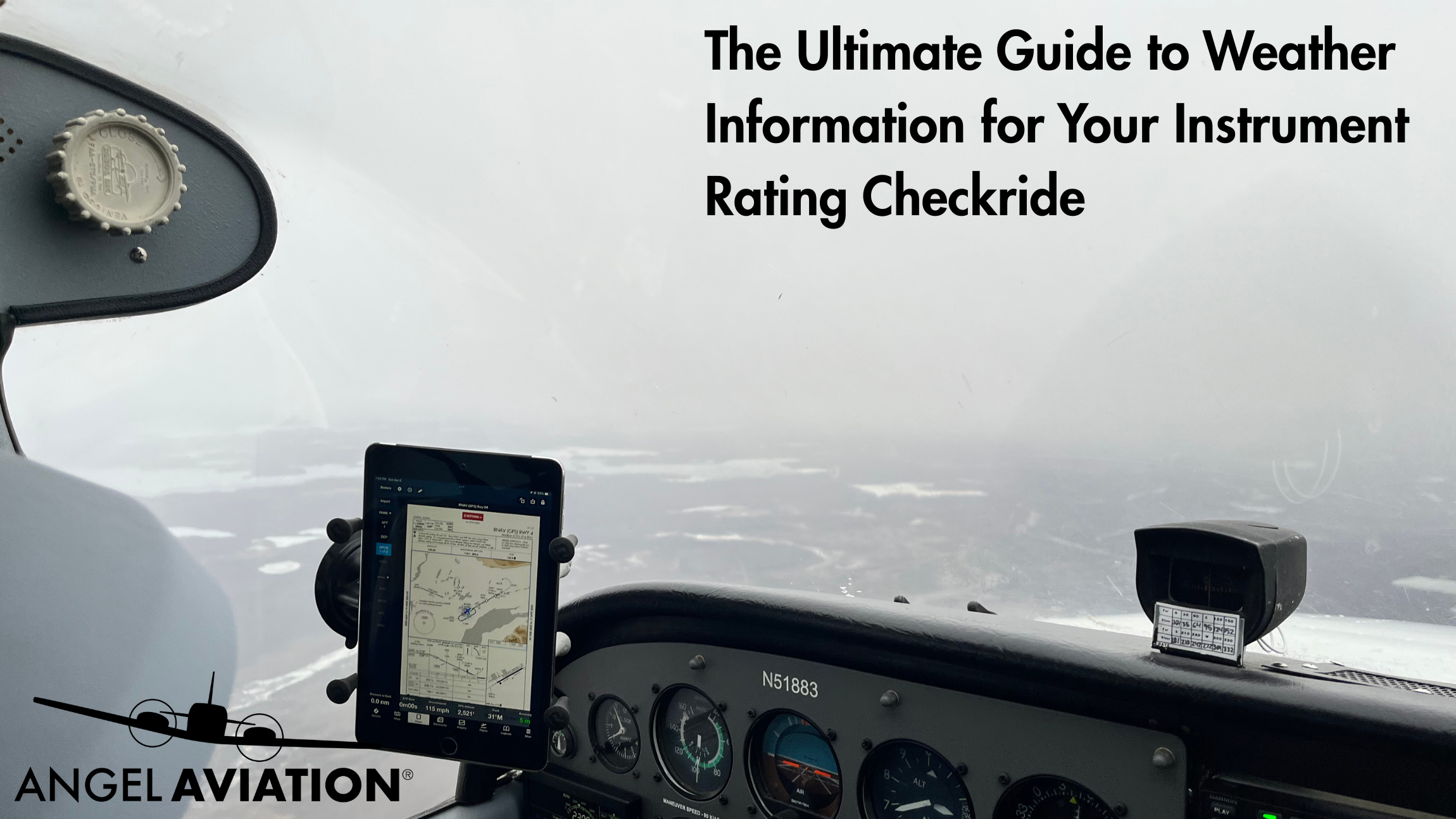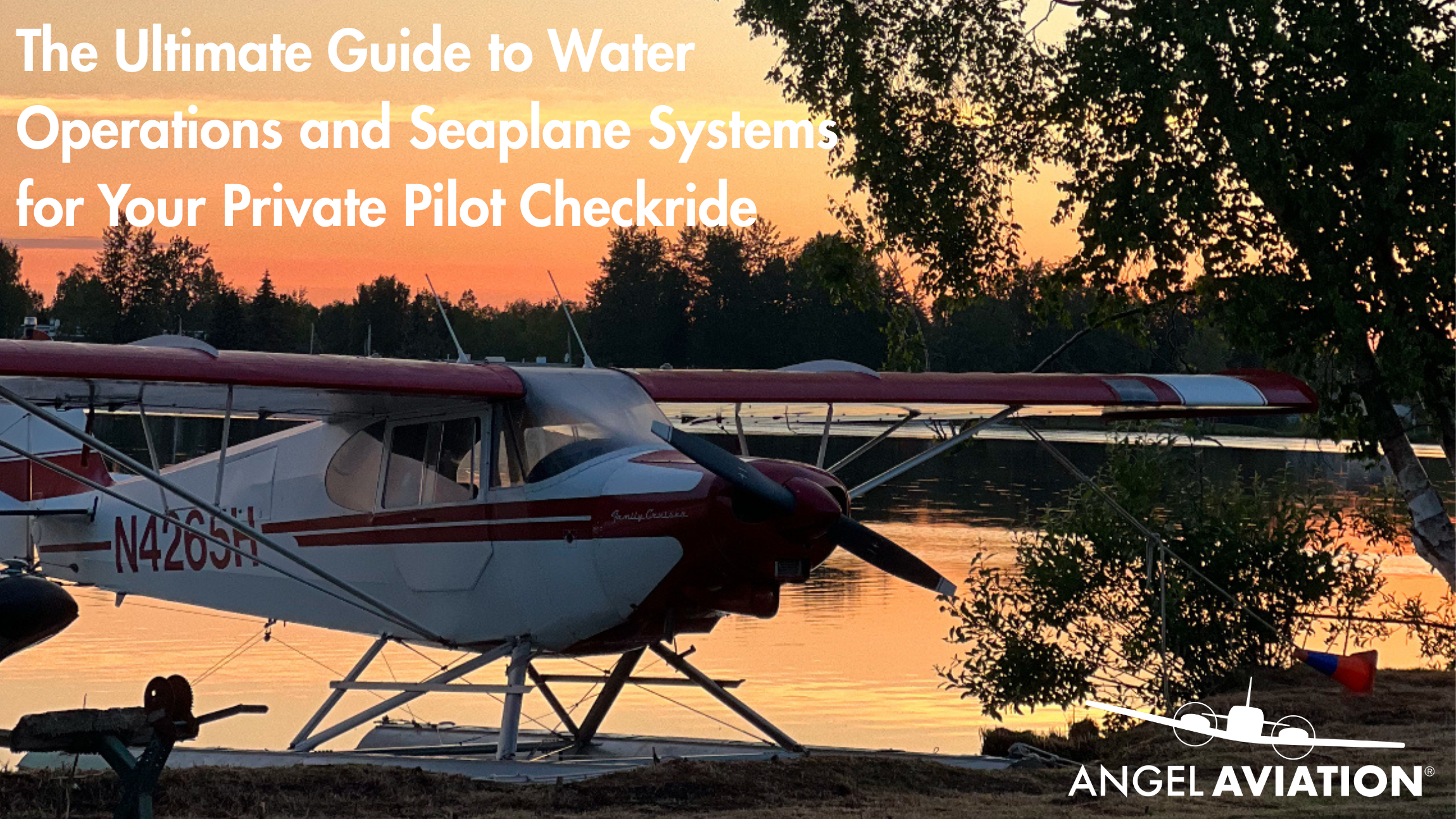At Angel Aviation, we know that executing a flawless approach means nothing if your pitot system fails and you don’t know how to react. IFR flying demands more than procedural knowledge — it demands system knowledge. Before your DPE has you fly a hold or shoot an ILS, they’ll want to know: Can you manage and troubleshoot the aircraft systems that keep you safe in IMC?
This guide covers Instrument Rating ACS Area VI: Aircraft Systems, highlighting the systems you must understand, how they relate to IFR operations, and what questions your examiner will likely ask.
🎯 What the Examiner Is Looking For
Under ACS Area VI, your examiner is checking to see if you can:
- Identify and explain aircraft systems relevant to IFR flight
- Describe failure indications and backup procedures
- Show how these systems impact your decision-making in IMC
- Demonstrate systems knowledge that supports safe instrument operations
Let’s break down the systems you’re expected to know — and how to brief them with confidence.
✈️ The Pitot-Static System
📚 Ref: FAA-H-8083-15B (IFH), POH
Your DPE may ask:
👉 “What instruments rely on the pitot-static system?”
👉 “What happens if your static port ices over in IMC?”
Instruments Affected:
- Airspeed Indicator – pitot and static
- Altimeter – static
- VSI – static
Failure Clues:
- Airspeed freezes or reads incorrectly
- Altimeter becomes unresponsive
- VSI shows 0 during climbs/descents
💡 Angel Tip: Know how to use the alternate static source and what effect it has on your readings (typically higher indicated altitude and VSI rate).
🧭 Gyroscopic Systems
📚 Ref: FAA-H-8083-25B (PHAK)
Understand whether your aircraft uses:
- Vacuum-driven attitude indicator and heading indicator
- Electrically driven turn coordinator
Know This Cold:
- What happens if the vacuum pump fails?
- What powers the AI and HI in your aircraft?
- How do you identify failure in IMC?
💡 Angel Pro Tip: Know how your aircraft alerts you to vacuum or electrical system failures — and how to transition to partial-panel flying.
🔌 Electrical System
📚 Ref: POH, FAA-H-8083-15B
IFR flight is heavily reliant on the electrical system — especially for:
- Avionics (GPS, NAV/COM, autopilot)
- Pitot heat / prop heat / lighting
- Gyros (if electric)
✅ Know how to identify an alternator failure
✅ Be able to explain how long your battery can power essentials
✅ Be familiar with load-shedding procedures
💡 DPE Scenario: “You lose your alternator in IMC — what’s your course of action?”
📡 Navigation & Communication Systems
IFR = NAV/COM.
You must know how your systems work and fail, especially:
- VOR/LOC – including reverse sensing
- GPS – RAIM availability and database validity
- Autopilot – modes, limitations, failure modes
- Audio panel – isolating failures
- Transponder & ADS-B
💡 Angel Tip: Make sure your GPS database is up to date and you’re able to explain how to verify it preflight.
❄️ Ice Protection & Pitot Heat
📚 Ref: §91.213, POH
Even if your plane isn’t certified for known icing, know how to manage:
- Pitot heat usage and failure indications
- Windshield defrost and cabin heat
- Alternate air source
- Carburetor heat or alternate induction air (if applicable)
👉 “What are your personal minimums regarding potential icing?”
👉 “How would you detect and respond to carb ice in IMC?”
🚨 Failure Scenarios to Prepare For
The examiner may walk you through system failure situations like:
- Vacuum failure in IMC
- Pitot-static blockage
- Loss of primary NAV or GPS source
- Autopilot runaway or failure
- Electrical system degradation
Be ready to explain:
✅ What clues indicate the failure
✅ What backup instruments/systems are available
✅ What you’d do next
💡 Angel Tip: Practice explaining failure scenarios out loud — this is a high-likelihood oral topic.
🧠 Questions You Might Get Asked
✅ “How do you know your pitot heat is working?”
✅ “What powers the heading indicator in this airplane?”
✅ “What’s the difference between GPS OBS mode and ENR mode?”
✅ “How would you fly an approach if your AI failed mid-flight?”
✅ “What happens if your battery dies while on an IFR flight plan?”
📚 Key References to Know
- POH/AFM – System-specific details
- §91.213 – Inoperative instruments and equipment
- IFH & PHAK – System operation theory
- Advisory Circular 91-75 – Cockpit technology use
- Instrument Rating ACS – Area VI system knowledge expectations
🧾 Final Thoughts from Angel Aviation
Understanding how your aircraft works is non-negotiable for safe IFR flying. In instrument conditions, you’re relying on those systems to keep you upright, on course, and informed — and your examiner knows it.
This isn’t about memorizing components. It’s about understanding cause and effect, diagnosing problems, and staying ahead of the airplane when your equipment doesn’t cooperate.






Leave A Comment